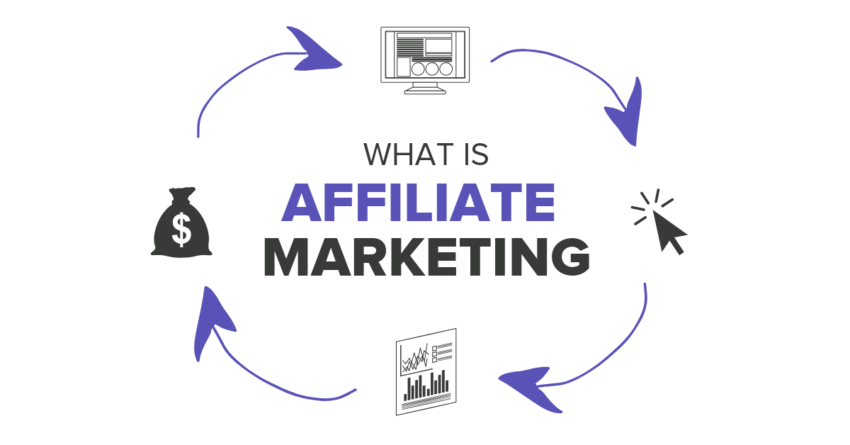How to Build a Successful Affiliate Marketing Blog in 2025

Affiliate marketing continues to explode in 2025, offering everyday people a real shot at earning passive income online. One of the most powerful ways to take advantage of this boom? Starting your own blog.
Whether you’re brand new to blogging or already have a site and want to monetize it, this guide will walk you through how to build a profitable affiliate marketing blog from the ground up—with real strategies that work in 2025.
Why Blogging Is Still One of the Best Ways to Make Money with Affiliate Links
Blogging might seem “old school” to some, but it’s one of the most sustainable and scalable ways to earn through affiliate marketing. Unlike social media posts that disappear in a day, blog content gets indexed by search engines and can bring in traffic—and sales—month after month, even while you sleep.
Affiliate marketing and blogging work together beautifully:
- You create content people search for (like product comparisons or how-to guides).
- You recommend helpful tools or products.
- You earn a commission when readers click your affiliate link and make a purchase.
Let’s break it down.
How Affiliate Marketing Works
Affiliate marketing is a revenue-sharing model where companies pay you a commission for sending them customers. You’re essentially helping people discover useful products or services and getting rewarded when they take action.
There are different payment models:
- Cost-per-click (CPC): You get paid when someone clicks your affiliate link.
- Cost-per-sale (CPS): You earn only when someone makes a purchase.
Most affiliate programs are CPS-based, meaning the more targeted and trustworthy your content, the more sales you can generate.
Pro Tip:
Don’t just chase high-paying commissions. Promote products that solve real problems for your audience—it builds trust and drives more conversions over time.
Step-by-Step: How to Build an Affiliate Marketing Blog in 2025
1. Choose a Profitable Niche
Picking a niche is the most important step. Your niche should strike a balance between your interests, audience demand, and affiliate potential.
Some hot affiliate niches in 2025:
- AI tools for small businesses
- Sustainable lifestyle products
- Online learning and digital skills
- Health & wellness for specific demographics (e.g., mental health for men)
💡 Look for long-tail keywords like “best AI writing tool for bloggers” instead of broad terms like “AI tools.” They have lower competition and attract high-intent readers.
2. Create Value-Driven Content
Content is the bridge between your audience and affiliate earnings. Focus on helping, not just selling.
High-performing affiliate content includes:
- Product reviews with pros and cons
- Comparison posts (e.g., “ConvertKit vs. Mailchimp: Which is better for new bloggers?”)
- Tutorials using affiliate tools
- Listicles (“10 Must-Have Tools for Freelancers in 2025”)
Be honest, be helpful, and always disclose affiliate relationships—it builds trust.
3. Join Reputable Affiliate Programs
You’ll need to sign up for affiliate programs that match your niche. Some top affiliate networks in 2025 include:
- Amazon Associates (massive variety, but low commissions)
- ShareASale
- CJ Affiliate
- Impact
- PartnerStack (great for SaaS tools)
Before joining, check:
- Commission rate
- Cookie duration (how long you’ll be credited after someone clicks)
- Payment terms and thresholds
🧠 Tip: Go for products or tools you’ve actually used—it makes content more genuine.
4. Drive Targeted Traffic with SEO and Promotion
You won’t make money if no one sees your content.
Start with on-page SEO:
- Use tools like Ubersuggest or Google Keyword Planner
- Optimize your blog posts with proper title tags, headers, and internal links
- Focus on solving a specific problem in each post
Then grow with off-page SEO:
- Build backlinks through guest posts and link-worthy content
- Promote your posts on Pinterest, Facebook Groups, and Reddit (depending on your niche)
- Repurpose content into short-form videos for TikTok and Instagram
5. Optimize for Conversions
Getting traffic is great. Turning that traffic into clicks and commissions is better.
Here’s how:
- Use clear CTAs like “Check Price on Amazon” or “Try [Tool] Free for 7 Days”
- Add comparison tables for quick product overviews
- Create dedicated landing pages for your top affiliate products
- Split-test different button styles, placements, and link text
Remember, it’s not about hard-selling. It’s about making the decision easier for your reader.
Common Mistakes to Avoid
Even smart bloggers make these rookie errors:
- Promoting products you don’t believe in just for high commissions
- Ignoring SEO and relying only on social media
- Not tracking your links (use tools like Pretty Links or ThirstyAffiliates)
- Writing without structure—make it easy to skim and absorb
Final Thoughts: Start Now, Grow Steady
Building a profitable affiliate marketing blog isn’t a get-rich-quick scheme. But if you’re consistent, intentional, and audience-focused, you can create a reliable income stream that grows with time.
So pick your niche, write your first post, and remember: affiliate blogging rewards those who play the long game. 🎯



